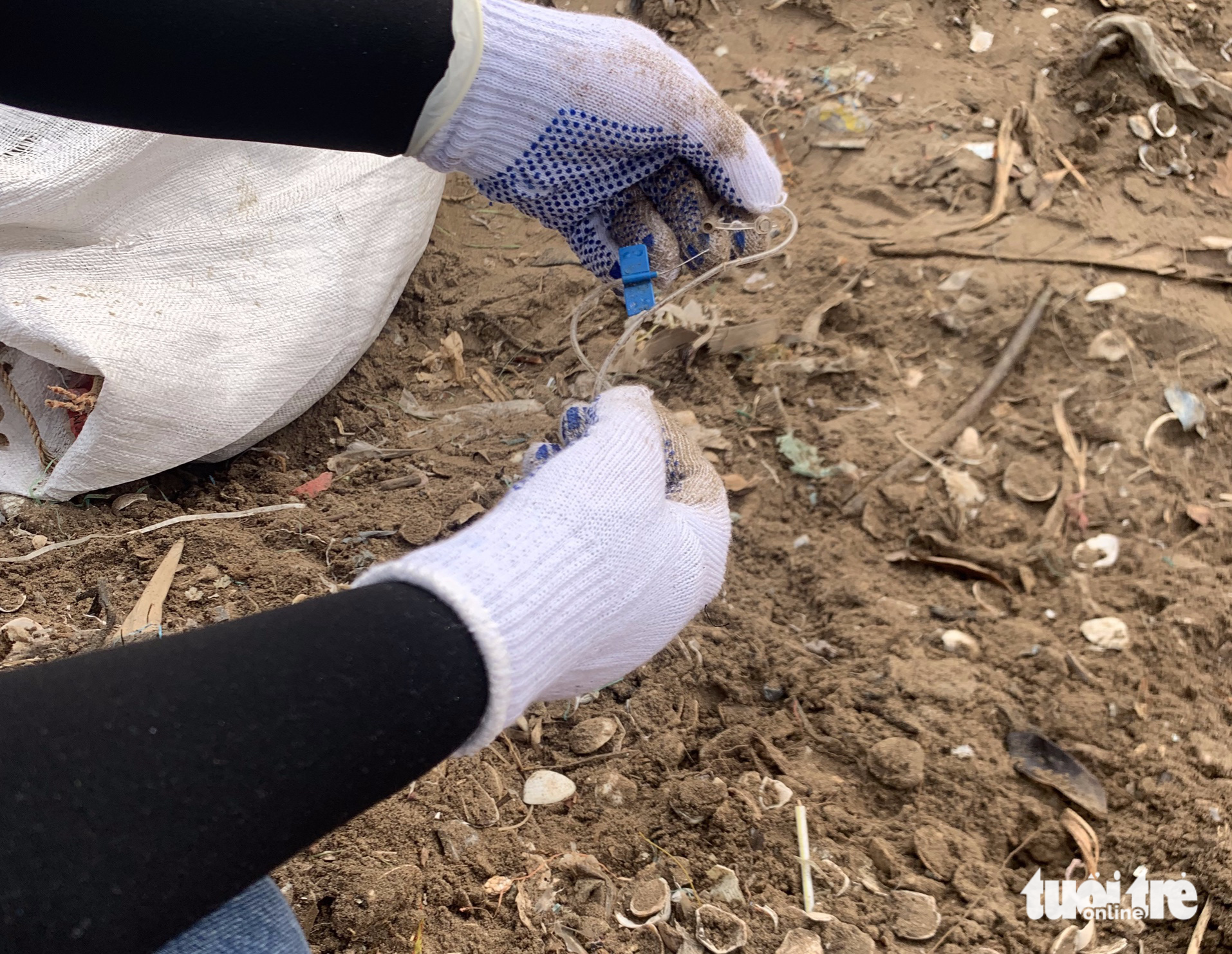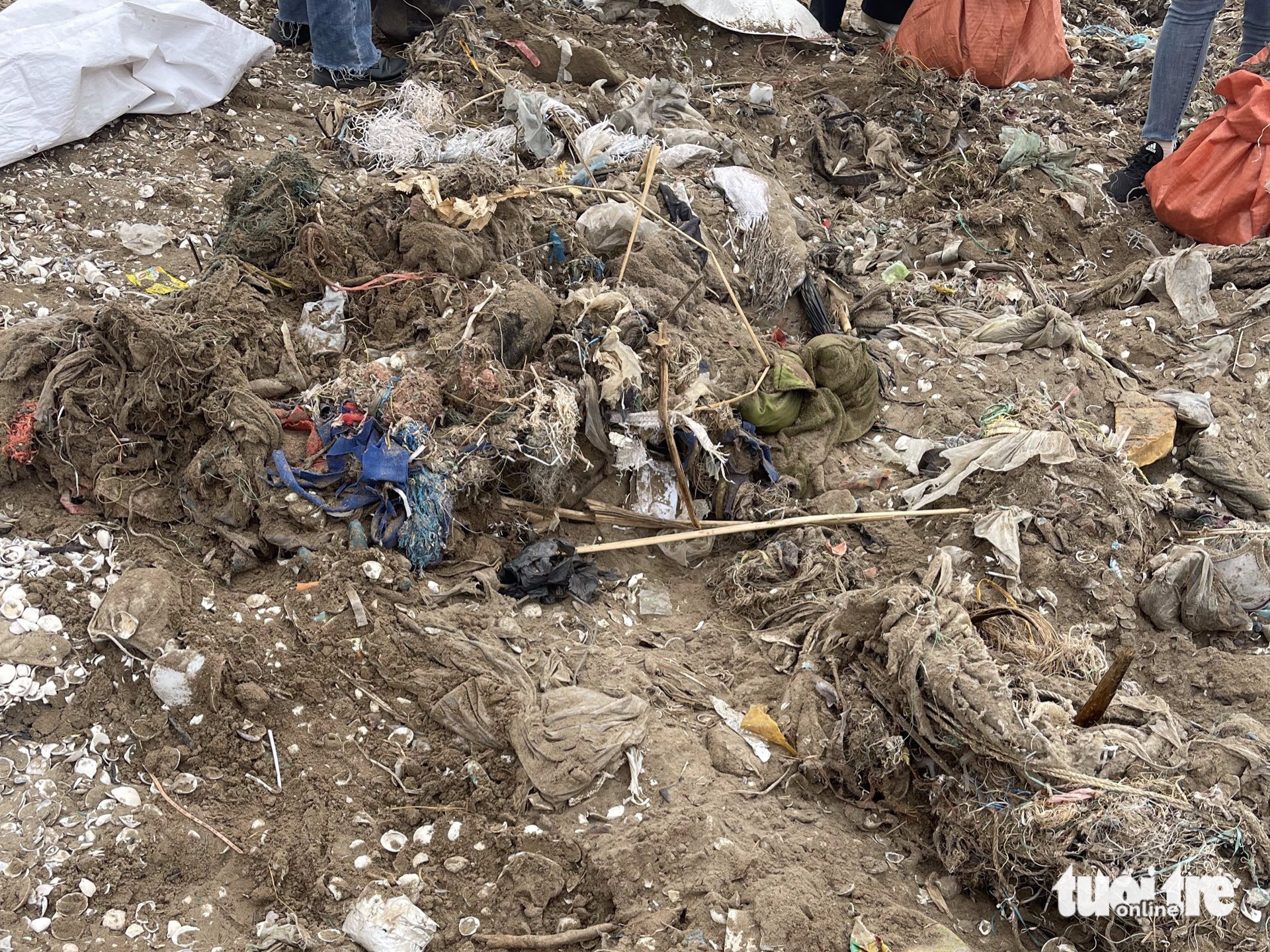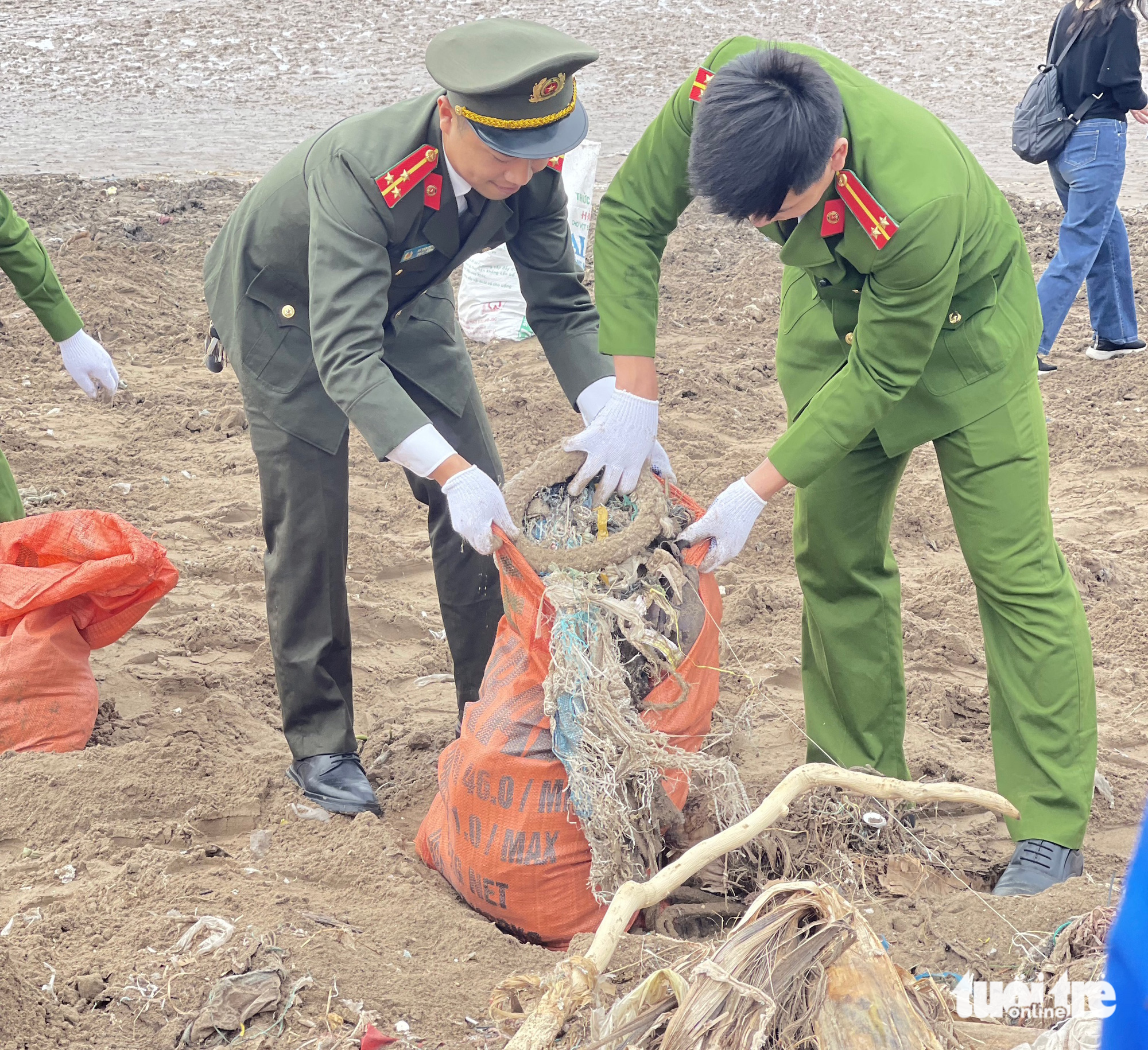Residents of Giao Thuy District in Nam Dinh Province, northern Vietnam have witnessed plastic waste heaps along local beaches over the past few years.
Tens of kilometers of coastline in Giao Hai Commune in the district is covered in smelly trash, according to a Tuoi Tre (Youth) newspaper reporters' observation.
Garbage includes mainly old clothes, bottles, plastic bags, single-use face masks, household waste, and even dangerous items such as needles and pieces of crockery.
The putrid trash heaps have turned dwellers’ lives upside down.
Many fishermen must wade through disgusting garbage piles to approach their boats every day, while the nearby households are suffering the unpleasant smell of the ‘trash dump.'
|
|
| Medical waste is found on the beach of Giao Hai Commune in Giao Thuy District, Nam Dinh Province, northern Vietnam. Photo: Ha Thu / Tuoi Tre |
“The place doesn't seem to be a beach anymore, but it looks like a landfill,” Nguyen Lan Phuong from Hanoi complained.
Hoang Van Cuong, a 64-year-old native of Giao Hai Commune, said that the disgraceful situation had existed for some 10 years.
The smelly rubbish has affected residents’ meals and their livelihood.
“While my family is enjoying a meal at 6:00 - 7:00 am, winds blow and carry the unbearable smell of garbage to my house,” Cuong said.
The garbage is also discouraging fishermen there. Many have caught much trash instead of fish or sea creatures.
Nguyen Van Tien, 45, a fisherman in Giao Hai Commune, said that he had netted mostly garbage for several months.
Trinh Van Doan, vice-chairman of the People’s Committee of Giao Hai Commune, told Tuoi Tre that there is a fishing wharf at the beach. Many boats dock at the wharf and crew members throw waste into the sea.
“When tides rise, garbage is washed ashore, forming such disgusting piles,” Doan said.
In addition, the beach of Giao Hai Commune is located in the downstream area of the Hong (Red) River, receiving not only alluvium, but also trash coming from the upstream area.
Speaking of the solutions to the waste treatment, Doan said that some dwellers collect plastic waste and sell it to waste-collecting shops, while the commune launches three beach cleanup drives each year.
“Public garbage and household waste are almost totally collected and treated. Each household has two trash cans for organic and inorganic solid waste. Those who litter in public places will be punished,” he added.
|
|
| A trash heap on the beach of Giao Hai Commune in Giao Thuy District, Nam Dinh Province, northern Vietnam. Photo: Ha Thu / Tuoi Tre |
|
|
| Police officers collect waste along the beach of Giao Hai Commune in Giao Thuy District, Nam Dinh Province, northern Vietnam. Photo: Ha Thu / Tuoi Tre |
Like us on Facebook or follow us on Twitter to get the latest news about Vietnam!























































